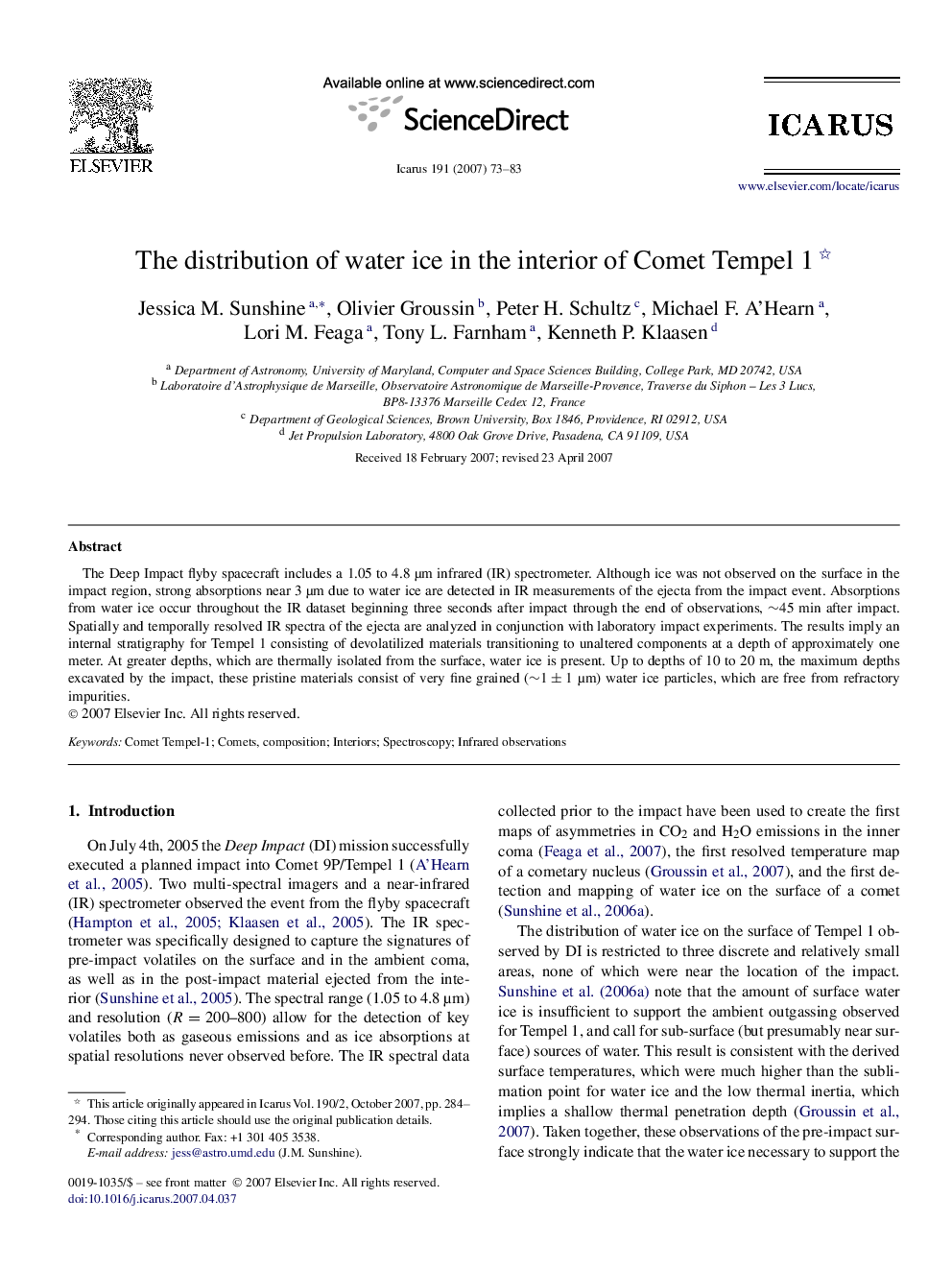| Article ID | Journal | Published Year | Pages | File Type |
|---|---|---|---|---|
| 1775239 | Icarus | 2007 | 11 Pages |
Abstract
The Deep Impact flyby spacecraft includes a 1.05 to 4.8 μm infrared (IR) spectrometer. Although ice was not observed on the surface in the impact region, strong absorptions near 3 μm due to water ice are detected in IR measurements of the ejecta from the impact event. Absorptions from water ice occur throughout the IR dataset beginning three seconds after impact through the end of observations, â¼45 min after impact. Spatially and temporally resolved IR spectra of the ejecta are analyzed in conjunction with laboratory impact experiments. The results imply an internal stratigraphy for Tempel 1 consisting of devolatilized materials transitioning to unaltered components at a depth of approximately one meter. At greater depths, which are thermally isolated from the surface, water ice is present. Up to depths of 10 to 20 m, the maximum depths excavated by the impact, these pristine materials consist of very fine grained (â¼1±1μm) water ice particles, which are free from refractory impurities.
Related Topics
Physical Sciences and Engineering
Earth and Planetary Sciences
Space and Planetary Science
Authors
Jessica M. Sunshine, Olivier Groussin, Peter H. Schultz, Michael F. A'Hearn, Lori M. Feaga, Tony L. Farnham, Kenneth P. Klaasen,
